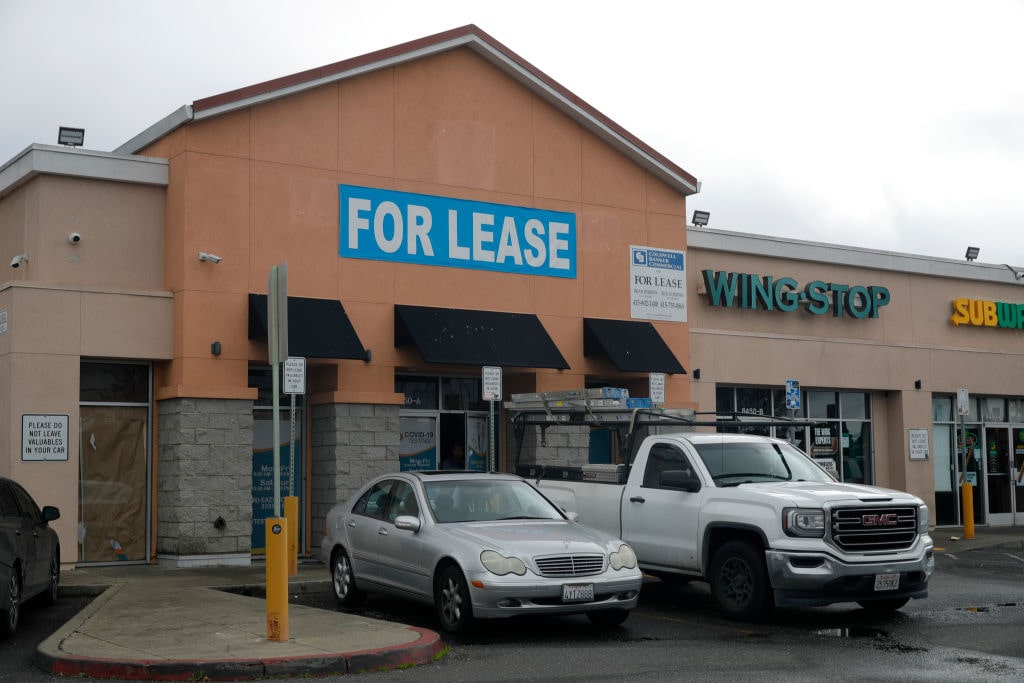Folks have been heading west to California in search of their fortunes since John Sutter and James W. Marshall first found gold in 1849. People have dreamed of striking it rich ever since, whether in an actual gold mine, or, in more recent history, either in Hollywood or Silicon Valley. Perhaps that’s why West Coast politicians seem so oblivious to the disastrous effects of their regulations. But nothing lasts forever, and for the business owners on the wrong end of those progressive policies, the Golden State is losing its luster.
Celebrity chef Andrew Gruel is just the latest to fold under Gov. Gavin Newsom’s anti-business regime. The Food Network judge recently announced he would keep one of his restaurants – and one only – in California. The rest, he’ll franchise out in other states. “I will not open another business in California until they actually fix things on a go-forward basis,” Gruel said.
Far From the First – And Probably Not the Last
A new law went into effect in April that raises the minimum wage for fast-food workers to $20 an hour. It applies to any restaurant that has at least 60 locations nationwide, with the exception of those that make and sell their own bread. There’s an interesting story behind that odd carve out: Gavin Newsom fought for this caveat in the final form of the minimum wage increase, and Greg Flynn, an old friend and mega-donor for the governor, owns two dozen Panera Bread restaurants in California. But the so-called Paneragate scandal is another story.
 Fast-food restaurants across the state began laying off workers and closing locations weeks – months, in some cases – before the law went into effect. Michael Ojeda, a 29-year-old delivery driver who had worked at Pizza Hut for nearly a decade, told The Wall Street Journal that he was given notice in December 2023 that his last day would be in February. Multiple Pizza Hut franchises dropped their delivery services entirely, and more than a thousand delivery drivers have lost their jobs because of it. Southern California Pizza Co. alone cut 841 positions in Los Angeles, Orange, San Bernadino, Riverside, and Ventura counties.
Fast-food restaurants across the state began laying off workers and closing locations weeks – months, in some cases – before the law went into effect. Michael Ojeda, a 29-year-old delivery driver who had worked at Pizza Hut for nearly a decade, told The Wall Street Journal that he was given notice in December 2023 that his last day would be in February. Multiple Pizza Hut franchises dropped their delivery services entirely, and more than a thousand delivery drivers have lost their jobs because of it. Southern California Pizza Co. alone cut 841 positions in Los Angeles, Orange, San Bernadino, Riverside, and Ventura counties.
Brian Horn, who owns two Vitality Bowls restaurants in San Jose, said he has cut his crews from four workers per store to two. “I’m definitely not going to hire anymore,” he said. Rubio’s Coastal Grill is now closing 48 locations across California due to the “rising cost of doing business in the state.” Other locations in nearby states, however, remain open. And of course they would – there’s no requirement to pay those restaurant workers a wage that would have been considered exceptional even for many factory jobs not that long ago. Mod Pizza and Fosters Freeze both closed locations, as well. Larger chains, like Chipotle, McDonald’s, Burger King, and Chick-fil-A, are keeping workers, but making up the difference by raising menu prices.
From California Dream to Fiscal Nightmare
From closing locations and cutting crews to raising prices and reducing products and services, California businesses are reacting precisely as anyone with a basic understanding of economics knew they would. Most folks go into business to make money – so, of course, companies seek to stop the loss of profit. It’s a tale as old as time: When the cost of doing business increases, it’s the customers or the employees – or both – who pay for it in the end.
Every minimum wage increase is accompanied by sharp price inflation within a matter of a few months. A gallon of milk doesn’t appear in the grocery store magically. Someone had to milk a cow. Someone else cared for and fed that cow, and other folks along the way processed the milk, packaged it (never mind the manufacturing of the container itself), loaded it onto a truck, and then drove it to the store, where yet more employees who have to be paid no less than the minimum wage unloaded the truck, stocked the shelves, and then ring it up at the check-out line.
In 2000, the California minimum wage was $5.75 an hour. Outside of fast food, it’s $11 an hour now. The average price of milk was $2.78 per gallon back in 2000, but it was $4.36 in 2023. Bread went from an average of $1.50 a loaf to $4.03 – $5.08 if you’re unlucky enough to be shopping in Los Angeles. Now, apply a similar price conversion to every single item you buy. Is it any wonder the bigger numbers on today’s paychecks feel like less money than back then? There may be more dollars each payday, but the loss of buying power has far outstripped the raises.
And then, of course, there’s all the people who got the “raise to $0 an hour.” It doesn’t matter much what the minimum wage is to the unemployed. And those who can’t find work either end up homeless or wards of the state on tax-funded “welfare.” As Liberty Nation’s Kelli Ballard reported, California had the nation’s highest unemployment rate – 5.3% – back in February, months before the $20 minimum wage took effect. The state also went from nearly a $100 billion surplus just a couple of years ago (though much of that was federal COVID relief funds) to a $38 billion deficit this year. One shudders to think what those numbers will be in February 2025.
Businesses have been fleeing California to more corporate-friendly climes for several years thanks to the progressive (read: oppressive) taxes and other business regulations – but each time the state squeezes tighter, more companies squish out, either packing up and moving or closing down entirely.




